Prinçipatu de Mùnegu
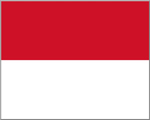
Playground of the rich and famous

Full of fast cars, famous faces and fat tourists, Monaco is indeed the playground of the rich. It is a tiny country, the second smallest in the world after the Vatican, and also one of only three true city-states, the third being Singapore. It is surrounded entirely by France but for its coastline, and situated between Nice and the Italian border. As a tax haven it attracts plenty of rich punters, who also come here for the great weather, beautiful scenery and annual Grand Prix through the winding streets. I don’t know what mad hatter originally decided to have a race with the fastest cars they could find in such a densely populated area, but it makes for good telly viewing. Which is how it is recommended to see the race even if you are in town for it, as the place gets absolutely heaving.
We were in Monaco on a day trip from Nice in summer 2003 and walked around most of the country, such is its size. The visit to the Prince’s Palace was interesting as was spotting bits of the Grand Prix track that are often seen on TV. Dinner was at a surprisingly good value burger joint at the marina. A helpful old man on the train in was showing us the good places to go and see on the map, and told us he had been living between Monte Carlo and Banff, Canada for the last twenty years, working in the international oil business. When asked for what company, he replied “oh…mine”. Twenty-something-year-old me thought that was very cool indeed.

Port Hercules as seen from the hill of Monaco-Ville, with the marina and the swimming pool which marks the starting line of the Grand Prix.
The Rainier III Nautical Stadium is the fancy name for the pool at Port Hercules, it is a full Olympic size and filled with heated saltwater. In the winter it is converted into an ice rink.


Port Hercules is studded with yachts and pleasure craft of all sizes, which double as viewing decks during the Grand Prix. The tallest apartment building in the background marks the border with France.
The furthest harbour walls were less than a year old at the time of my visit, another stage in Monaco’s reclamation of the sea, there being no scope to expand inland.


Walking up to the Prince’s Palace, seat of the House of Grimaldi in the July heat was tough work, and to make matters worse I was barked at by a guard to put my t-shirt back on, which I had been using to dry my face. Me being me, it wasn’t until after taking the palace tour that I realised Princess Grace of Monaco and Grace Kelly were one and the same.
The palace ramparts and clock tower. The palace dates back to 1191 but its current form is much more recent, with considerable restoration in the late 20th century. It has been the residence of the Grimaldi family continuously for over seven hundred years, having captured it in 1297.


Main entrance to the Prince’s Palace, and closely guarded in a style much like the Grand Ducal Palace of Luxembourg.
Cannons remain pointing towards the east and France, because, well, you never know.

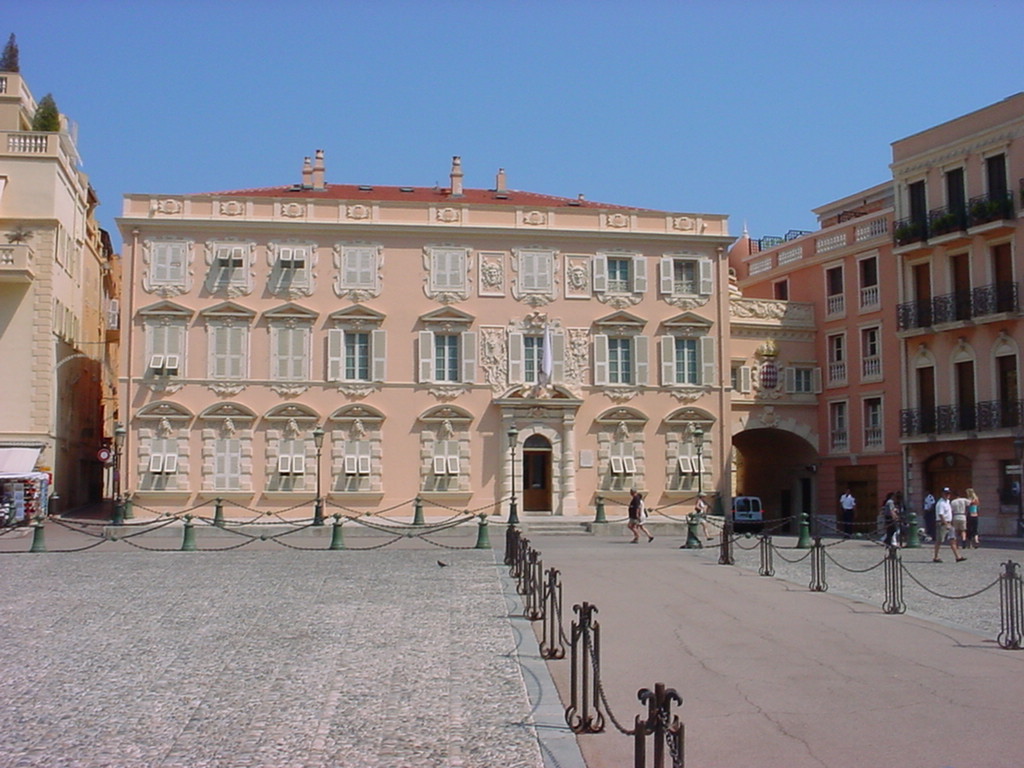
On the other side of the Place du Palais, Monaco-Ville is fronted by a wealth management headquarters, but of course.
Looking from the palace away from the marina over the red roofs of the city. The tall apartments in the distance mark the border, and the mountains are of course all part of France.
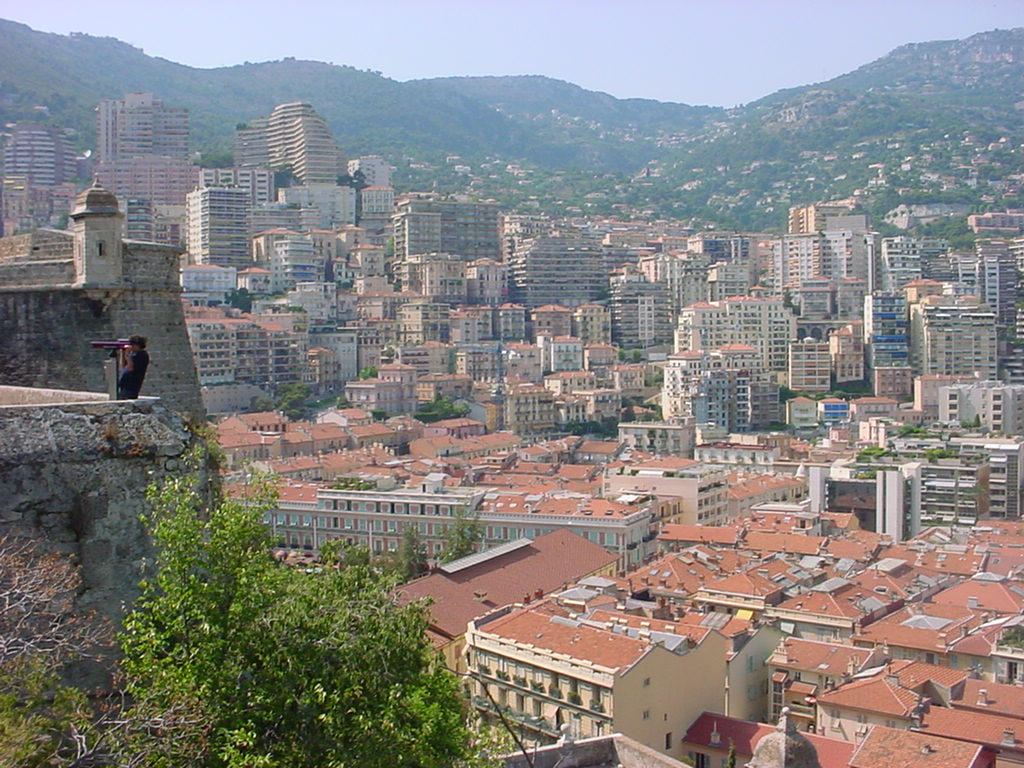

Part of Boulevard Albert 1st is visible through the trees, recently converted back to civilian use after the F1 racing in May.
To the east of Monaco-Ville is Fontvielle is one of the newest parts of Monaco, having been built on land reclaimed in the early 1970s. The large tent on the left is the event space Chapiteau de l’Espace, which as you might guess occasionally hosts a circus, and is next to Monaco’s heliport. The entire country is smaller than most international airports.
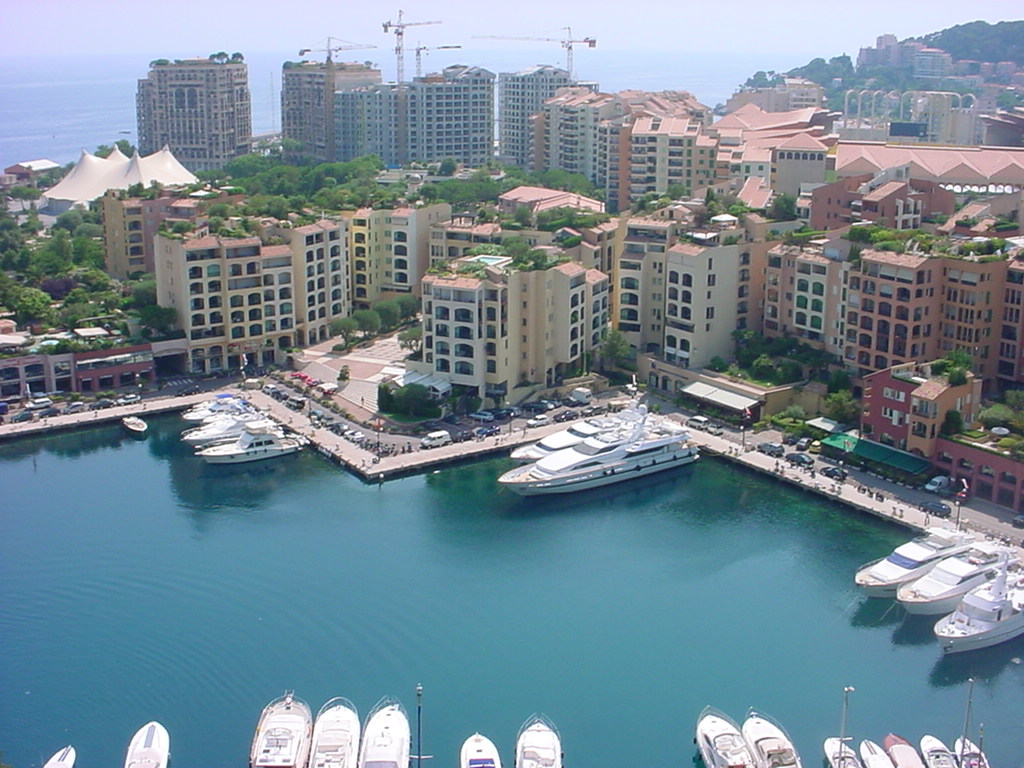
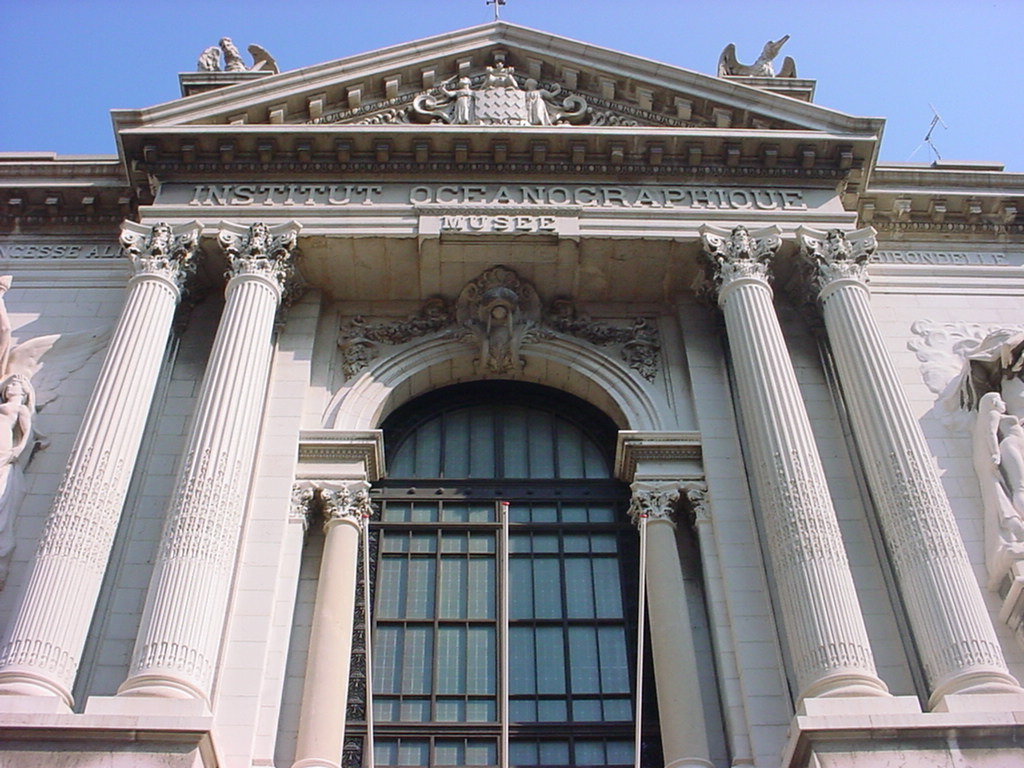
Monaco’s Oceanographic Museum is a mighty classical edifice, and all the more impressive from the sea side, which I didn’t know until after my visit, having not been able to get on a yacht. It dominates the rock of Monaco-Ville, and dates back to 1910.
It’s possible to walk around the entire F1 track, at least on the pavements as the roads are in everyday use. The red and white kerbstones at the tight turns are permanent, but the roads are repainted for the race and then repainted after, in part because the F1 cars strip most of the paint off the road. This is the famous Fairmont Hairpin to the east of the casino, the race cars go down the curve of this hill.


The Monte Carlo Casino as seen from the gardens which extend north, full of statues of people in classy 1920s style clothes, just like the people you see here. It opened in 1865 and is majority owned by the Grimaldi family, but citizens of Monaco are banned from entering the gaming halls, only foreigners may do so.
The casino entrance was naturally festooned with flashy cars, but there was no sign of James Bond that particular day. I would have had to pay ten Euros to get to the tables inside, but not being a gambling man I decided just to use their bathroom. It was a little worrying sitting on a toilet that was plugged into the wall and had LCD screens, but the self cleaning mechanism was a marvel to watch.

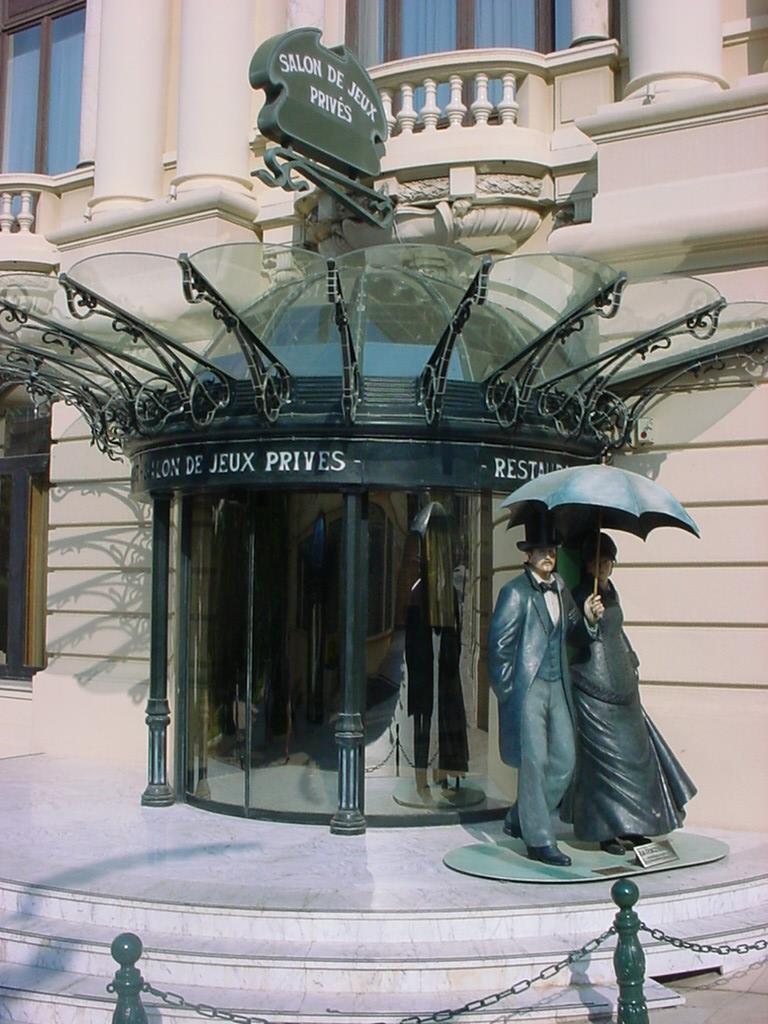
There is a separate entrance to the private gaming rooms, although it appears to be so private that only statues may enter.
A most striking feature of the wealth of Monte Carlo is the quantity of quality cars cruising the streets. Staggering numbers of Rolls-Royces, Bentleys, Daimlers and top-spec Mercs litter the casino square, with green-hatted chauffeurs strolling up and down. Every five minutes or so a Ferrari or an Aston Martin would growl past, or perhaps a concept car or two from the mass manufacturers showing off their latest creations.


One of the period statues which decorate the casino garden, with all the green foliage it makes for a nice picture.
This busking chap is doing especially well, considering his fiddle strings are all broken, he hasn’t scraped out a single note, and his significant musical disadvantage of being cast in bronze. Yet look at his takings for the day!
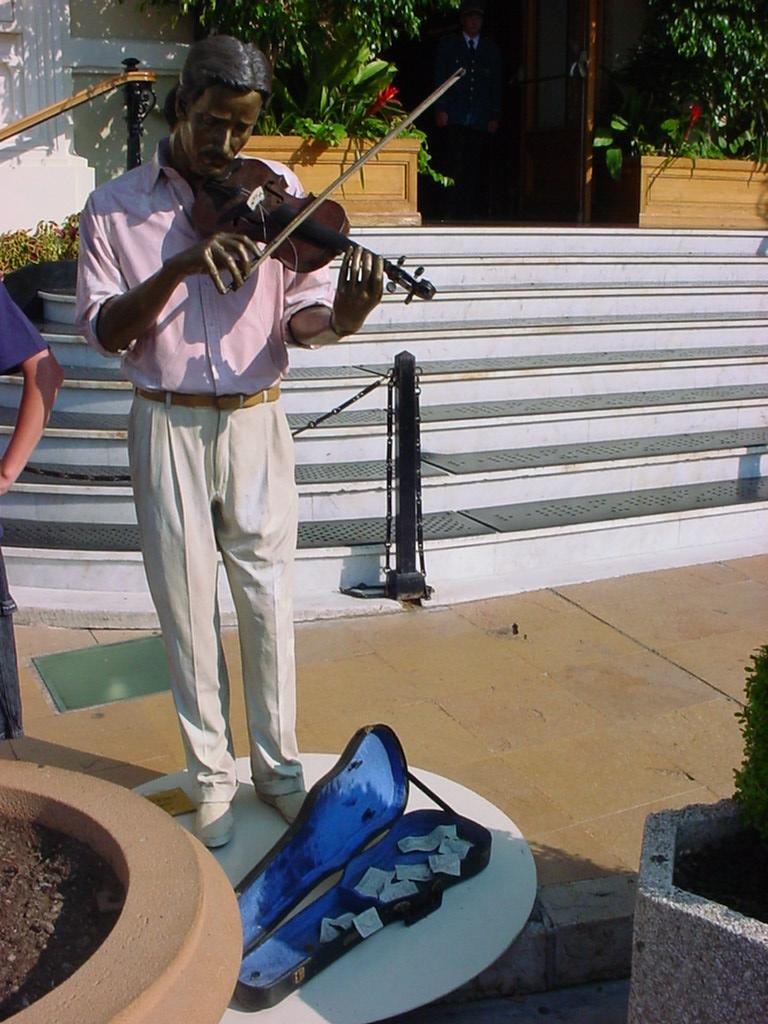

Across the Place du Casino and a gleaming Bentley is the Cafe de Paris, owned by the same bunch as the casino, it is a very popular tourist spot for lunch.
The Hotel de Paris on the other side of the Place du Casino was another of Monaco’s efforts in the 1860s to attract wealthy tourists and international spies. Two Bond films have been shot here so far.


Another view of Port Hercules, with an exit of the famous F1 Tunnel Larvotto visible beneath the exterior of Hotel de Paris, and the green roof of the casino. Yachts of all shapes and sizes abound.
You know you’ve peaked in the world of the posh when you are sitting having dinner with friends in the back of your yacht in the port of Monte Carlo, while the waiters on the yacht next door are polishing the cutlery and uncorking the Moët. Cheers!
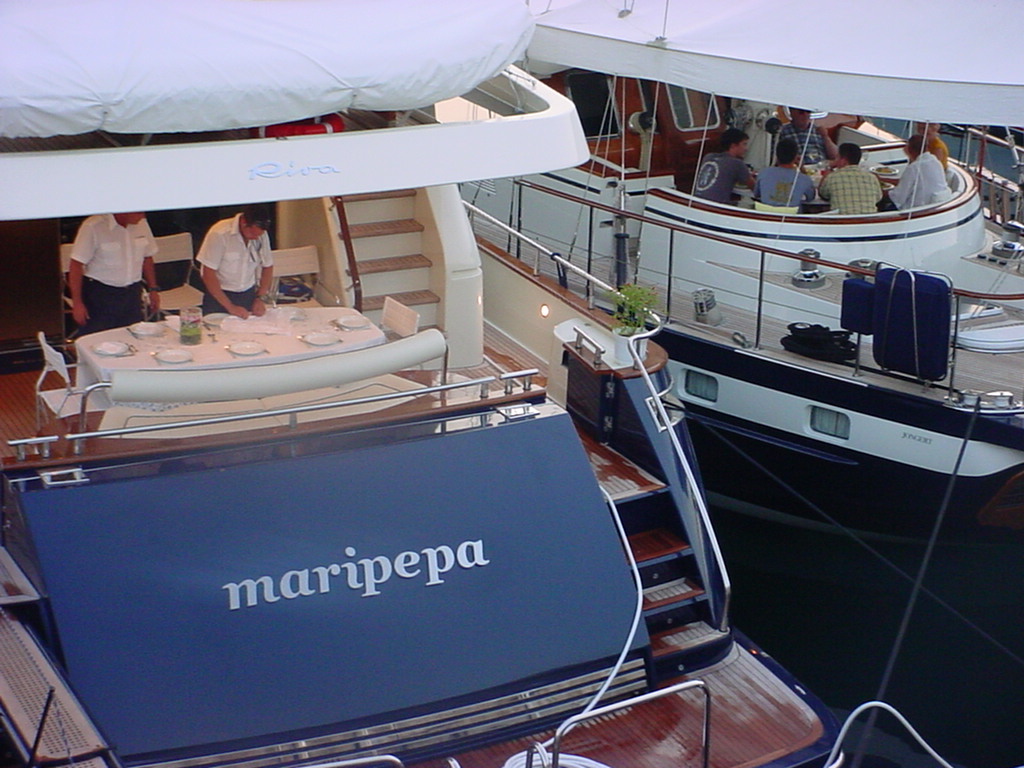

Monaco’s most famous annual event, the Grand Prix, has been bringing in the top names of the F1 business year after year, and has been doing so since 1929. This statue commemorates Argentine racing driver Juan Manuel Fangio who won Monaco each of the three times he entered the race in the 1950s.
Created 2003 | Updated 2013, 2023
